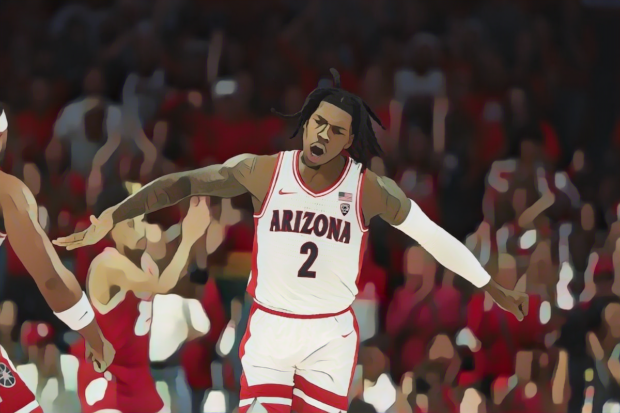The world of college athletics has undergone a seismic shift in recent years thanks to Name, Image, and Likeness (NIL) deals. What was once a clear-cut decision—turn pro if you’re good enough, stay in college if you need more development—has evolved into a more nuanced debate. Today, players who may not project as first-round NBA (or NFL) draft picks are finding another path to financial stability by remaining in college and capitalizing on sponsorship and endorsement opportunities. But the question remains: Should college players stay if they aren’t guaranteed a first-round selection and instead take the NIL money?
The Rise of NIL: A Game-Changer
- Immediate Earning Potential
Prior to the NIL era, the only route for most college athletes to monetize their talents was to leave school—often prematurely—for a professional contract. Now, athletes can sign endorsement deals, appear in ads, or partner with local and national brands while still in college. For players who aren’t sure-fire first-round selections, NIL can serve as a safety net, guaranteeing immediate income without the uncertainty of a second-round or undrafted free agency contract. - Leverage in Decision-Making
For years, athletes who were on the borderline of the first-round bubble had to weigh the possibility of a late or non-guaranteed pick against the risk of staying in college and delaying their pro dreams. With NIL, however, the gap between pro and college earnings might narrow. Staying in school no longer means forfeiting all financial benefits, thus empowering players to make more patient and informed decisions.
Pros of Staying in College
- Development and Experience
A player who needs additional skill refinement often benefits from another season (or two) in a structured college environment. Coaches are incentivized to help them develop, and regular game action—particularly for those at competitive programs—can dramatically raise a player’s draft stock. In contrast, going pro too early can lead to minimal minutes, G League or developmental league assignments, and a slower progression. - Enhanced Visibility
Many colleges have massive fan bases and established media networks, which can help an athlete grow their personal brand. A year (or multiple years) in a high-profile NCAA program—especially with the current hype around college sports—can lead to increased national attention. This visibility translates to greater NIL opportunities and a stronger following that can extend into an eventual pro career. - Academic and Personal Growth
It’s easy to overlook the educational aspect when big money is at stake. But for some players, earning a degree or continuing to develop life skills can’t be understated. College is also a softer environment to handle media scrutiny, learn time-management, and prepare for the mental rigors of professional sports. Leaving too soon might put them in a high-pressure scenario before they’re ready.
Cons of Staying in College
- Injury Risk
The longer a player stays in college, the greater the risk of a serious injury that could jeopardize their professional prospects—and that NIL money is unlikely to match the potential earnings of a solid NBA or NFL contract. For athletes whose bodies have already taken a beating, turning pro sooner often feels like a safer bet to secure a financially stable future before injuries derail their value. - Delaying Professional Development
Although college can nurture growth, some top-level prospects flourish more under pro-level coaching and resources. The NBA’s G League, for instance, is specifically designed to groom players for the next level. If a prospect is genuinely pro-ready, staying in college may delay their integration into advanced systems, full-time training regimens, and higher-level competition. - Missed Networking and Opportunity
In the professional ranks, players can form relationships with established veterans, coaching staffs, and franchise executives. These connections can pave the way for better contractual negotiations, brand-building, and post-career ventures. Spending an extra year or two in college might postpone these connections—and for borderline prospects, each year of a playing career counts.
Navigating the Gray Area
Most college athletes don’t have the luxury of a guaranteed first-round contract. For players in that gray area—somewhere between a late first-round projection, second-round pick, or an uncertain future in the pros—NIL deals can level the playing field. Potentially earning six figures or more in college might outstrip a non-guaranteed, second-round rookie salary. Furthermore, the possibility of improving a draft stock through another standout season in college, bolstered by name recognition and brand deals, can significantly increase a player’s long-term NBA earnings.
However, there is an inherent gamble: staying longer doesn’t automatically mean a draft boost. Player growth isn’t linear, and sometimes

an additional year can expose weaknesses rather than highlight strengths. Moreover, NIL deals, while lucrative, don’t always match the security of a pro contract—especially if the athlete’s college stardom fades without continued on-court success.
The Bottom Line
For college athletes outside the guaranteed first-round discussion, the calculus has changed thanks to NIL. Staying in school no longer equates to sacrificing financial upside; it can provide a safer runway for personal, athletic, and brand development. Yet, it’s also essential to consider the heightened risk of injury, the potential stalling of pro development, and the unpredictability of collegiate performance.
Ultimately, the decision hinges on each athlete’s unique circumstances: their draft evaluations, readiness for professional basketball, personal academic goals, and the size of the NIL opportunities on the table. In this new era, it’s a more complicated—but more flexible—decision than ever before. For many, that’s a welcome change from an age when the lines between “stay” or “go” were drawn strictly by the fleeting pursuit of a pro paycheck.